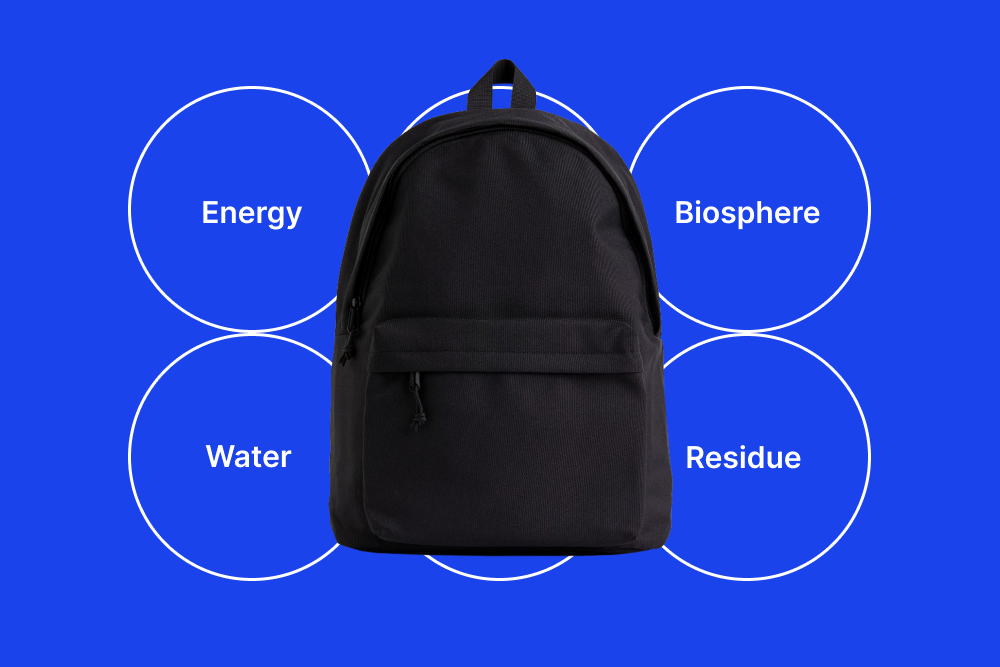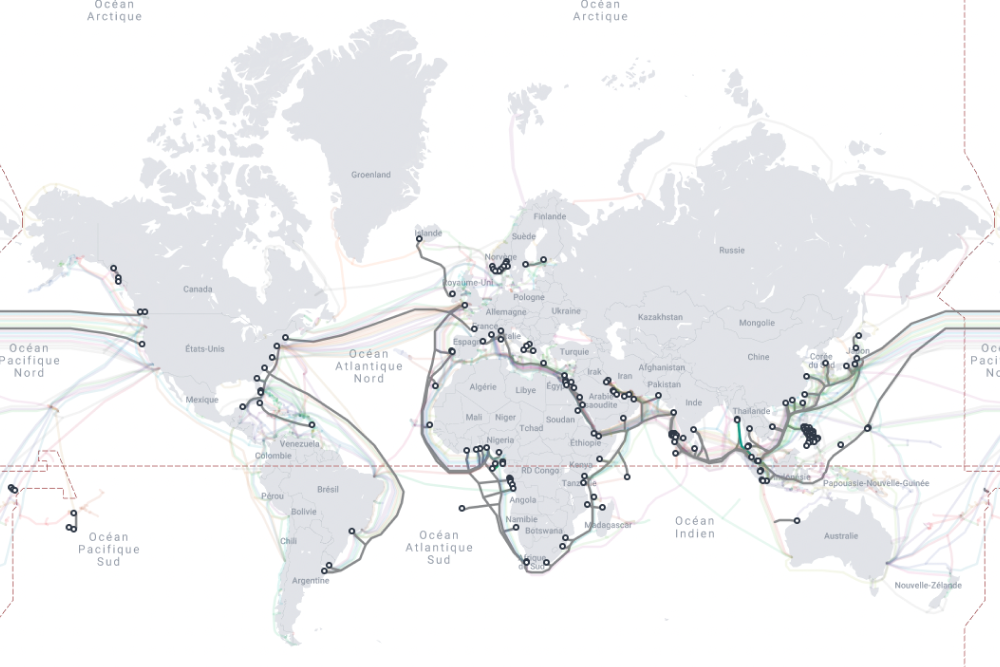03 Feb 2023
The invisible impact of eCommerce on the environment

eCommerce activities have a major environmental impact. Some aspects of eCommerce that are damaging to the planet are tangible, very easily visible. We think of packaging, transportation of goods, incentives to overconsumption, etc.
The ecological footprint of digital technology is growing. Indeed, eCommerce and the Web in general are dissonant with the principles of sustainable development. It is estimated that by 2025, digital will account for 7.5% of global GHG emissions, and 5.2% of global energy consumption. (1)
Online shopping is on the rise every year, especially since the 2020 pandemic. However, few people stop to think about the environmental impacts of eCommerce. It is therefore very important to make consumers aware of these impacts. For Novatize, it is essential to educate and inform merchants as well as consumers and to go deeper into subjects that are too often neglected.
Beyond what is visible to the naked eye, it is necessary to dig deeper to know the real impact of all the eCommerce actions of your company. This way, you can make more responsible choices and take steps to reduce your impact.
What are the main causes of environmental impacts associated with the Web?
The main sources of environmental impacts associated with the Web are energy consumption and greenhouse gas emissions. The energy consumption of the Web has been estimated at more than 500 terawatt-hours per year, which is equivalent to the energy consumption of Switzerland!
Interfaces, devices and hardware
“The results of the WeGreenIT study confirm that the manufacturing of IT equipment is one of the main sources of environmental impact (29% of energy consumption, 54% of GHG emissions, 61% of water use and 97% of resource depletion). The users’ work environment (computers, screens, external peripherals) and the IT department (premises, means of transport and equipment of the people responsible for running the information system) account for between 44% and 66% of the impacts, depending on the company. ” (2)
Indeed, the raw materials used to manufacture our phones, our tablets or our computers are dangerous for the planet. They are also essential in the design and use of an online store. The manufacture of these devices may require more than 70 different materials, including 50 metals. Among these compounds is graphite, 70% of which is mined in China under unacceptable working conditions. The mining environments require a lot of water and produce toxic waste.

To measure the impact of the production of our devices, we can refer to our “ecological backpack”. This is a concept where we present the hidden weight of all the natural resources (extraction, energy, water, biosphere, etc.) necessary to manufacture a product. It includes all the quantity of extracted materials and residues, oil and water used, as well as the share of biosphere, all brought back to the proportion of a copy of the product. The calculation is based on the MIPS indicator (Material input per unit of service).3 The image of a backpack is used because it is invisible, hidden behind the product in question. For example, a smartphone weighs between 100 and 300 grams: its ecological backpack represents approximately 200 kg to 250 kg of materials.
Beyond manufacturing, we must also think about the recovery and management of devices that no longer work. “Eighty-eight percent of French people change their cell phone while the old one is still working, between 50 and 100 million phones are sleeping in a drawer.” 4 The flow of waste electrical and electronic equipment is increasing by 2% per year worldwide.
What are the solutions to limit the environmental impact?
- Encourage the design of sustainable devices and be aware of the source of the devices you buy.
- Keep your devices as long as possible and resist temptation when a new model is introduced.
- Repair a broken device instead of replacing it.
- Donate an item you no longer use to a person in need or to an organization that can repair and reuse it.
Telecommunication networks and data centers
When you take an action on the Web, it leads to a chain of reactions. For example, if I like someone’s photo on Instagram or send an email, it will travel a real distance on the “information highway. “An email sent that would weigh 1MB is the equivalent of a light bulb being turned on for an hour. An hour of video streaming is the same 60-watt light bulb on for 250 hours. “6

These small and trivial actions require massive energy and infrastructure, especially in a globalized world. To see the magnitude of this, we can see the Submarine cable map 2023. This map illustrates all the cables that are needed to transport telecommunications and information. These cables are composed of dozens of optical fiber. Each of them has the capacity to carry ten terabits of data per second. These cables are present all over the world (even in our oceans!).
Moreover, the growth of digital technology means an ever increasing amount of data. This data must be stored in a data center. The purpose of these buildings and infrastructures is to store the data of an organization’s information system in one or more servers. The eCommerce is an economic activity that requires a very large amount of data. There are more than three million data centers in the world. Data centers are known to be very energy intensive. Unfortunately, the majority of them are powered by coal-fired power plants. Only a minority of data centers are run on renewable energy.
What are the solutions to limit the environmental impact?
- Support more sober digital by limiting one’s data use and interactions to the essential.
- Clean up your phone and/or computer to avoid storing what is not necessary (e.g., emails, photos, videos, etc.)
- Encourage local advertising initiatives and vary your media mix.
- Be informed and question the measures taken by your provider (e.g.: avoid data centers that are powered by fossil fuels).
- Encourage data center projects in Quebec that are powered by renewable energy. In addition, the winter cold cools their servers and this allows energy savings of about 25%.5
Novatize’s team felt it was important and relevant to share with you these facts about pollution and energy consumption related to the eCommerce world. Although our power in this ocean of data and consumption is infinitely small, we believe that awareness and information are our best weapons. If you’ve learnt a few things to reduce your environmental impact through the web and are applying them, that’s a win!
References:
1. Conférence, Guillaume Pitron, L’Impact écologique du numérique, Connected Week, Angers France 2022.
2. https://www.wwf.fr/vous-informer/actualites/etude-wegreenit-quel-impact-environnemental-du-numerique-dans-les-entreprises#:~:text=La%20fabrication%20des%20%C3%A9quipements%20informatiques,l’%C3%A9puisement%20des%20ressources).
3. https://declic-ecologique.com/le-sac-a-dos-ecologique-une-mesure-dimpact-de-vos-achats-responsables-en-entreprise/
4. https://www.ecologie.gouv.fr/sites/default/files/Feuille_de_route_Numerique_Environnement.pdf
5. https://www.grenier.qc.ca/nouvelles/30098/reduire-lempreinte-carbone-des-publicites-en-ligne-cest-possible
6. Le froid hivernal refroidit leurs serveurs. Chez Vantage, cela permet des économies d’énergie d’environ 25 % en hiver.
Inspired by what you’ve read?
Our team of experts can help you take your eCommerce to the next level!
